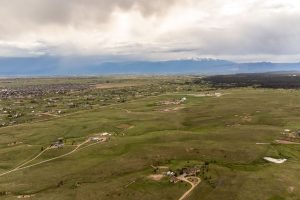The great property assessment kerfluffle
By Terry Stokka
In May, the Colorado State Assessor raised a firestorm when the biennial property tax assessments came out. The assessments reflected the assessor’s determination of property values as of June 30, 2022. That particular date is the ending date used every other year when property values are assessed to determine new tax bills. The problem was that June 30, 2022, was at the peak when housing values took a dramatic leap upward, and people were actually bidding home prices up by $50,000; in some cases, just to be able to win the contract for a home.
That was not good news for property owners. The new tax statement showed what the property taxes would be for that increased property value, and people went into shock. In many cases, property taxes were forecast to increase by $2,000 and more. Those numbers seem to have been premature.
The new assessment allowed an appeal by showing similar property values that would decrease a home’s value. According to The Gazette, the county received over 36,000 appeals. I asked Friends of Black Forest members to tell me the results for their individual appeals and received about 200 responses. Assessed property values increased by 40% to 80% with several greater than 100%. About 46% of the appeals were denied (like mine). The county said half of the appeals were denied. For the appeals that were approved, the reduction in assessed value was between 4% to 12% with a few up to 20%. A second appeal can be filed, which involves a personal interview with someone from the assessor’s office and a knowledgeable real estate professional to review each case.
A large part of the frustration was the wide inconsistency in assessed values and which appeals were approved and which were not. No pattern was evident on how the assessments or appeals were conducted and why properties were assessed or appealed so differently.
As I see it, there are three possible solutions to this dilemma:
1. The state assessor could adjust the assessments to be 10% to 20% more than the values obtained on June 30, 2020, — two years earlier. This would increase all property values by that amount and base the new taxes on that number. The downside is some properties may have decreased in value though a number of them have increased more than 20%.
2. The El Paso County Assessor could grant a blanket appeal, which would reduce the new assessed value to only 10% to 20% — an increase over the 2020 values. The state controls the assessment process, but the county controls the appeals.
3. I questioned my county commissioner, Holly Williams, and she gave me some interesting information. She said TABOR limits the amount of revenue the county and the state can take in each year. That amount is determined by the Consumer Price Index (CPI) and a growth factor from population increases. I don’t know how it is figured, but she said different entities will have to decrease their mil levy in order to keep from collecting too much revenue under TABOR. District 38 schools and the Black Forest Fire District have restrictions from TABOR. District 20 and the Falcon Fire District do not have restrictions from TABOR so we will have to wait to see what they do. The county will be refunding some of the property taxes in accordance with TABOR rules as well. She said the bottom line is the county will not be collecting as much property tax as was indicated on the original tax letter we all received.
A group called Advance Colorado Action has been formed to oppose the elevated property values and is organizing a ballot initiative to limit the tax increase to 4%. They must collect 124,000 signatures to get it on the ballot. They are also calling on Gov. Polis to call a special legislative session to address the property tax problem.
For all of us, we will have to wait until January when the new tax bills arrive to see how this plays out. No doubt we will be seeing discussion of this in the newspapers from the schools and fire districts.




